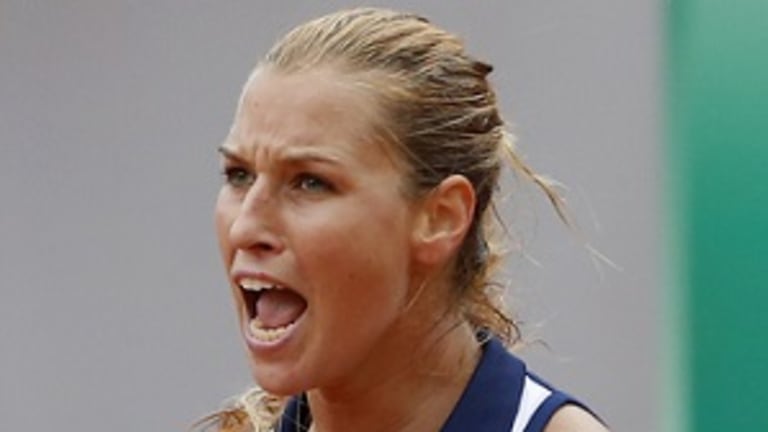Suddenly, tennis is getting younger by the week. We began July with 19-year-old Nick Kyrgios’s Wimbledon run, and spent the European clay swing that followed learning about Alexander Zverev and Borna Coric, both 17. Now, back in the States, we’re going younger still. Yesterday in Stanford, Naomi Osaka, a 16-year-old from Japan currently ranked No. 406, upset Sam Stosur. Later, in Washington, D.C., 17-year-old Jared Donaldson of Rhode Island won a set, while another 16-year-old, Francis Tiafoe, made a more-than-respectable showing in his (nationally televised) professional debut. Tiafoe, who trains in nearby College Park, Md, won eight games from Evgeny Donskoy. That’s not bad, considering that Tiafoe is ranked 1024 places behind him.
How did the kid look? I’ll start by saying that he could continue a noble tradition of young men learning the game while their fathers labored at local tennis centers. Pancho Segura’s and Ilie Nastase’s dads were both custodians at fancy clubs, the former’s in Ecuador, the latter’s in Romania. Both of the sons, who were surrounded by tennis from a young age—racquets, balls, nets, and equipment were all over the house—went on to develop unique games. Segura gave the world its first and greatest two-handed forehand. With Nastase, it seemed as if he hadn’t learned the sport so much as internalized it.
Tiafoe’s father, Francis, Sr., a native of Sierra Leone, was part of the construction crew that built the club where his son plays, College Park’s Junior Tennis Champions Center, and later became a maintenance man there. And Tiafoe, as anyone could see last night, also has a unique game. The question going forward, as it is with all prodigies, is whether he has the technique to translate that talent. Does he, in other words, have the right game?

